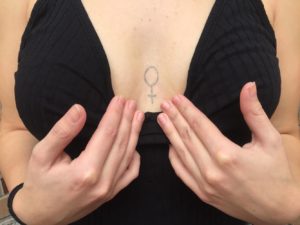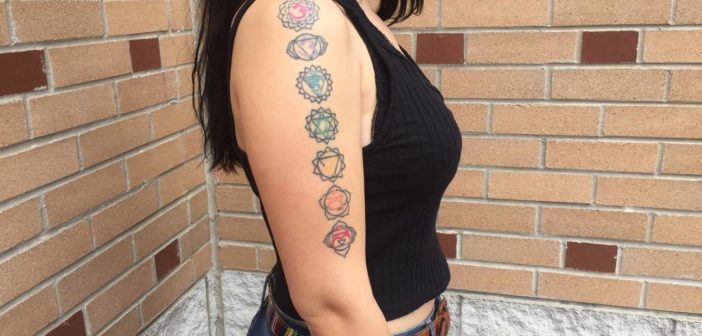Art in its most mainstream forms is often revered by individuals of all professions — but how does body art fit into the picture of what is and isn’t acceptable in the workplace?
As of 2017, the generation that is inheriting the workforce, public and political domains — Generation Y — is not wholly foreign to the consumption of body art that has so often remained taboo in professional spheres.
According to USAToday, 40 percent of Millennials — the generation born between the early 1980s to the 2000s — have tattoos. The same report states that almost 75 percent of individuals who get tattoos get them between the ever soul-searching ages of 18-22.
With so many of those who many dub to be “the future” of the new world getting tatted so early in their professional careers, the collision of such personal choices and an individual’s professional endeavors can’t help but come to head. Whether such a meeting is progressive or halting continues to vary.

Photo by Stella Fanega
Emily Alaimo, a junior majoring in political science, anthropology and environmental studies has five tattoos along with 10 different piercings, attests to the fluctuating responses from employers and professors alike regarding her own body art and that of others.
“I have bosses who without a doubt treated me different because of my tattoos and piercings, when I proved I was a good worker. I have also encountered professors (at North Central) who take one look at the big tattoo on my arm and very obviously begin judging me without knowing me,” Alaimo said.
Indeed, because tattoos are a personal life choice — a form of expression — that are not only permanent, but oftentimes visible, they are up to a level of scrutiny by their perceivers that can be considered by that of the ordinary level.
While employers still reserve the right to deny employment for those with visible tattoos — or at the very least request that they remain unseen at all times — growing are the number of environments that are becoming indifferent to such personal choices.
“I have also had professors and bosses who celebrate the art of tattoos and don’t look at me any different because of them,” Alaimo said.

Photo by Stella Fanega
This kind of indifference or celebration on the part of academic or professional superiors can be attributed, among other factors, to the specific line of work an individual falls into.
The amount of tattoo-friendly variation that arises in different professional atmospheres may have a variety of factors behind it — with the ages of those in charge perhaps being a major one.
If Generation Y — those individuals who now are anywhere between the ages of 17-35 — are essentially inheriting the workforce, it is no wonder, then, that certain work environments are becoming more accepting of body art.
Alaimo, who at one point was hired at a job by a corporate employee who approved of visible tattoos, was nonetheless berated by an older couple who she encountered at that same place of employment.
“(This older couple) told me that my tattoos and piercings were disgusting and demanded that my manager fire me because of them…(but later the staff and I) basically all just laughed about it. I think that the younger generation especially is starting to accept body art more and more,” Alaimo said.
Even branches of the United States military have expanded their regulations regarding acceptable tattoo visibility.
According to the official U.S. Air Force site, “There are no size or area limitations for authorized tattoos on the chest (below an open collar), back, arms, and legs.”
A line of work that is defined by its level of tradition, the Air Force’s move towards a wider range of acceptability when it comes to tattoos may be tell-tale of the greater U.S. workforce’s move in a similar direction.

